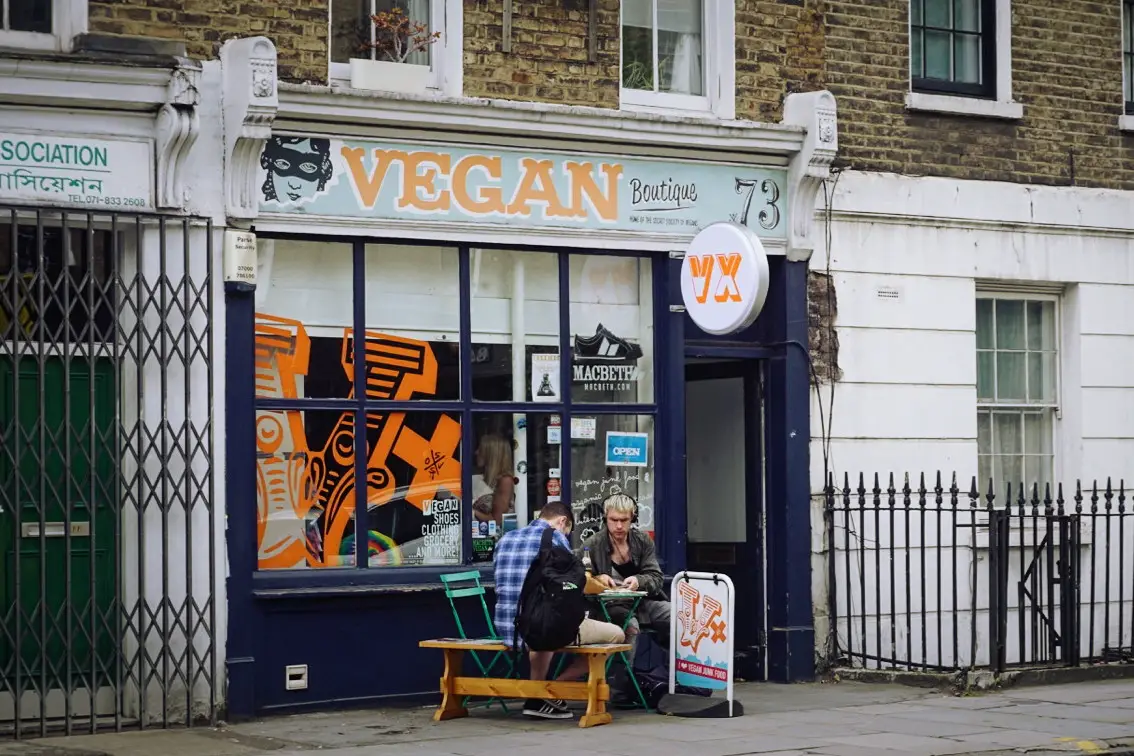Traveling is worthwhile, yet typically requires some sort of planning before you jet out on any major trip.
When you’re vegan, it can be more difficult in certain areas to find options and accommodations for your lifestyle. The five tips below will give you a headstart on your vegan travels.
1. Research Vegan-Friendly Cities
Before you travel, your first step should be researching cities that are the most accommodating for your vegan lifestyle, from their menus to daily activities. You can locate cities online by searching on Google, using the hashtag #vegantravel on Instagram or pinning on Pinterest. According to CNN, here are some of the best places for vegan travel:
Portland, Oregon was named by PETA as America’s #1 Vegan-Friendly City for 2016 due to their vegan food trucks, gourmet eateries and even the first vegan mini-mall in the U.S. Sweet Hereafter displays a fully vegan menu in a bar setting, which is rare and the prices are inexpensive at $10 and under. Portland’s vegan coffee shops provide alternative milk options for beverages; a popular location is Heart Roasters, which sources the best green coffee from mainly Central America, South America and Africa.
Voodoo Doughnut has long lines, but they are well worth the wait by providing a wonderful vegan selection for anyone with a sweet tooth. Portland has many vegan locations available beyond these, which makes it a bucket list stop for vegans.
Berlin, Germany has earned the title as Europe’s Capital of Vegan with relatively cheap prices for vegan meals. In Berlin, the vegan lifestyle has expanded beyond just food choices to vegan clothing stores and even sex shops offering condoms without latex, which often contain milk proteins.
Berlin has made this switch gradually as people living in the city began to notice the environmental impact consuming less meat and dairy products can have, since it takes more than 2,400 gallons of water to produce one pound of meat, among other statistics highlighting the importance of a vegan diet. Vegan restaurant Voner has a faux-meat version of Berlin’s popular kebabs, while Viasko is known for their vegan desserts.
Tel Aviv, Israel hosts Vegan-Fest Tel Aviv, the world’s largest vegan festival, where vegans can gather for a day to watch performers, participate in attractions and celebrate their veganism together. There is easy access to organic fruits and vegetables for restaurant owners with an emphasis on freshness of produce. Tel Aviv has over 400 completely vegan or vegan-friendly restaurants including Zakaim, supposedly the best vegan option in town and Nanuchka, which transforms meat delights into vegan alternatives.
Toronto, Canada has seen an increase in vegan eateries including YamChops, a meatless butchery with beet burgers and no-crab crab cakes. Toronto hosts several vegan themed events annually such as Veg Food Fest with 35,000 visitors each Fall. TripAdvisor has a list of the best vegan restaurants in Toronto located here.
You are not limited to the places listed above; however, they will be some of the most accommodating locations for vegans.
2. Use Vegan Eating Guides
HappyCow is a must for vegans and vegetarians, especially when exploring a new place. The website asks you to type in a location and then it lists multiple vegan or vegetarian-friendly options in the area with an app version as well for on-the-go, last-minute eating plans.
Barnivore educates people on what alcoholic beverages are vegan by visitors searching a wine, beer or liquor brand/type on the website to find out the verdict (Vegaholic is the app version). AirVegan tells you what airport terminals have vegan choices and Veganagogo offers assistance picking menu items and thanking servers in the local language.
If you are traveling abroad, learn how to ask for meals without meat or dairy products in the native or most common language. You can also let your accommodations know you are vegan so they can cater to you or point you in the right direction.
3. Pack Food from Vegan Grocery Stores
The resources listed above such as HappyCow additionally give information about vegan stores that are usually more cost efficient to purchase from than restaurants. If you purchase food from grocery stores in bulk, you can prepare snacks to eat while traveling and have more money for other excursions on your journey.
With this in mind, you will need Ziploc bags or small food boxes to store the food in your backpack or luggage. You can pack fruits, veggies and trail mix as quick hunger solutions. Raw vegan food is the easiest to obtain while traveling and a budget-friendly option.
Traveling internationally can make this task a little more daunting; however, learning a few words in the other language can benefit you when searching for vegan-friendly products. Some of these words include, but are not limited to, buttermilk, honey, lactose, gelatin and whey.
An easier solution is to use the app Is it Vegan? that lets you scan items to determine if they are vegan. If you stay in an accommodation with a kitchen, you will have an easier time preparing vegan meals when options are not available in the city you are visiting.
4. Meet up with Vegan Locals
The app travelstoke allows individuals to share pictures and advice with other travelers to gain connections within a travel community. Travelers can post their vegan food experiences and plan to meet up with people from the app if they choose. If you search vegan and a city name on meetup.com, the site will list several events or groups where you can interact with like-minded individuals.
Couchsurfing has a hangout option where users can potentially connect with hosts and travelers that are vegan by viewing each other’s profiles for similar interests. Facebook groups can be set up to specific regions and are probably the safest option when finding vegan locals. Although meeting locals can be interesting and fulfilling experiences, exercise caution when reaching out to people you do not know and always meet in a public place.
5. Visit an Animal Sanctuary (or two)
If you’re vegan for ethical reasons, visiting a farm sanctuary while on your travels can be a nice addition to your itinerary. Sanctuaries are safe havens for animals that have experienced cruelty from factory farming practices or abandonment.
You might have to plan this excursion in advance because some sanctuaries restrict tours to certain times during the month or exclusively to appointment-only tours to give the animals more privacy while they’re recovering from traumatic experiences. Be prepared to donate money or purchase tickets for the experience as it supplies much-needed resources for the animals.
Here is a comprehensive guide detailing farm sanctuaries in the U.S. and internationally with links to their websites for more information. Depending on how long you want to travel, sanctuaries have volunteer opportunities where you can interact with the animals and help them on the road to recovery.
6. Vegan Rental Cars
If you’re renting a car, it’s not going to be easy to go entirely vegan, as cars in general often have material derived from animals — take leather seats, steering wheels and gear selectors, to name a few.
The best chance to avoid these is to opt for the cheapest car possible, as leather is often seen as a luxury product in cars; as a result, the cheapest rental available is the least likely to have any leather. Did you know that only Tesla currently offers a full vegan interior? See more at Rhino Car Hire.

















